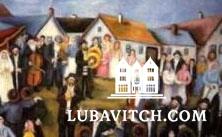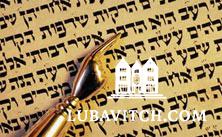
Once upon a time there were different synagogues for different social classes’ one synagogue for carpenters and shoemakers, another for farmers, and an entirely separate one for learned Torah-scholars who would not pray alongside the “common folk.”
Unbelievable? Just two hundred years ago, throughout the shtetls of Eastern Europe, such was indeed the situation.
Then came the Baal Shem Tov.
Rabbi Israel Baal Shem Tov (lit. ?Master of the Good Name,? 1694-1748), founder of Chassidim, showed how such ?social? divisions were inimical to Judaism. He explained the common Divine origin of all souls, and the beautiful traits of spiritual treasures to be found in every Jew, whether scholarly or unlearned. He taught:
Rabbi Israel Baal Shem Tov (lit. ?Master of the Good Name,? 1694-1748), founder of Chassidim, showed how such ?social? divisions were inimical to Judaism. He explained the common Divine origin of all souls, and the beautiful traits of spiritual treasures to be found in every Jew, whether scholarly or unlearned. He taught:
Everywhere he went, the Baal Shem Tov broke down the barriers between Jews, building bridges of ahavat yisrael (love of one’s fellow), bringing them together, teaching them about their enormous obligations of mutual responsibility and mutual affection; showing that we are one.
But opposition was fierce — sometimes fanatical. Building bridges between the Torah-scholar and the unlettered — declared his opponents-degraded the honor of Torah and encouraged simplicity.
Yet, within several generations, the Chassidic attitude became universal. In our own age, the notion of separate synagogues for different classes of Jews seems such an absurdity that some, to this very day, find it difficult to accept that the Baal Shem Tov was indeed the author of the barrier-melting revolution in Jewish society two centuries ago.
History repeats itself. Just seventy or eighty years ago, all smaller rural communities throughout Europe consisted entirely of religious people; a non-observant Jew was an unheard-of phenomenon. But the subsequent upheaval of two World Wars utterly changed the face of Jewish society, and in the 1930s and 1940s we find the communities of Western Europe and America divided into two separate, distinct camps partially or totally non-religious in one group, and the observant in the other, with the latter having no desire to mix with, or to reach out to, the non-religious camp.
Then came Lubavitch, in the 1940s, and the assault on the barricades dividing Jew from Jew began in earnest.
First and foremost, Lubavitch pioneered the Jewish day-school system in America, introducing the concept that a full-time Torah educations be made available for all Jewish children. Then they turned their attention to the Public Schools, where the majority of Jewish children in attendance were non-religious. Yet, precisely for those children, Lubavitch educators utilized the ?Released Time? provision of New York State Law to set up, in 1942, a network of classes providing basic Torah-instruction for one hour a week. ?Mesibos Shabbos? youth groups for Shabbat afternoons were established; Chabad chassidim began to appear on the city streets during the Sukot festival, offering etrog and lulav, to whom? — to the unobservant, of course; the first Torah-oriented English children’s monthly in the world, ?Talks and Tales,? first came off the press for Chanukah, 1942.
Thirty years ago, Russian-born ?chabadniks? sat shoulder to shoulder with their Jewish brothers of supposedly doctrinaire communistic and ?anti-religious? persuasion, in an atmosphere of warm affection and joyous friendship, at a Chassidic gathering in the Israeli Lubavitch settlement of Kfar Chabad. The world’s first yeshiva for baalei teshuvah (?returnees? to Jewish practice), Hadar Hatorah, opened its doors in Brooklyn in 1962; later, another, the Tiferes Bachurim ?New Direction Program? in Morristown, New Jersey. Then the Chabad Houses?
?And the rest is history.
Just as in the Baal Shem Tov’s era, the Lubavitch barrier-breaking approach was, at first, sharply criticized, even attacked with vehemence; and once again, after the passage of only a few years, the Jewish day-school system and an ?outreach attitude? has become all-but-universal. Throughout the community it is becoming increasingly recognized and accepted that we are one. A oneness unique to the Jewish people. Limbs of the same body. Strengthening one limb, one Jew, fortifies us all. A oneness given frequent and eloquent emphasis within Chabad Chassidism, reflecting its fundamental belief that every Jew, regardless of affiliation or background, possesses a neshama, a unique soul, a G-dly spark. In its essence, this spark of G-dliness is common to all Jews and equal in all Jews, which gives new significance to the often-repeated colloquialism, ?A Jew is a Jew is Jew.?
By virtue of the neshama (the G-dly soul), the Torah and all its precepts are the inheritance, the right and the privilege of all our people. So when the question is raised, ?Why do you put on tefillin in the street, or hand out Shabbat candles and candleholders, to men and women whom you have never met before?? the chassid of Lubavitch responds:
Because of what they already are, not because of what they may become; not so that he or she may one day become ?orthodox,? but because right now they are already Jewish, and tefillin and Shabbat-candles belong to them; it is their right and their obligation to perform the mitzvah, and it is our privilege, honor and obligation to respectfully help them do so, with the same fervor and compassion that I would provide a warm meal and a place to sleep for a passerby whom I have never seen before and may never see again.
Some have termed outreach kiruv rechokim, ?drawing close those who are distant.? Lubavitch comments: No Jew should be characterized as ?distant,? for, in essence, we are one.
Rabbi Schneur Zalman of Liadi, founder of Chabad-Lubavitch, declared: ?Grandfather (as he called the Baal Shem Tov) deeply loved simple folk. In my first days in Mezritch, my Rebbe (the Baal Shem Tov’s successor) said: It was a frequent customary remark of the Baal Shem Tov that love of Yisrael is love of G-d. ?You are children of G-d your G-d?; when one loves the father — one loves the children.
— Rabbi Joseph Isaac Schneersohn, the sixth Chabad Rebbe





